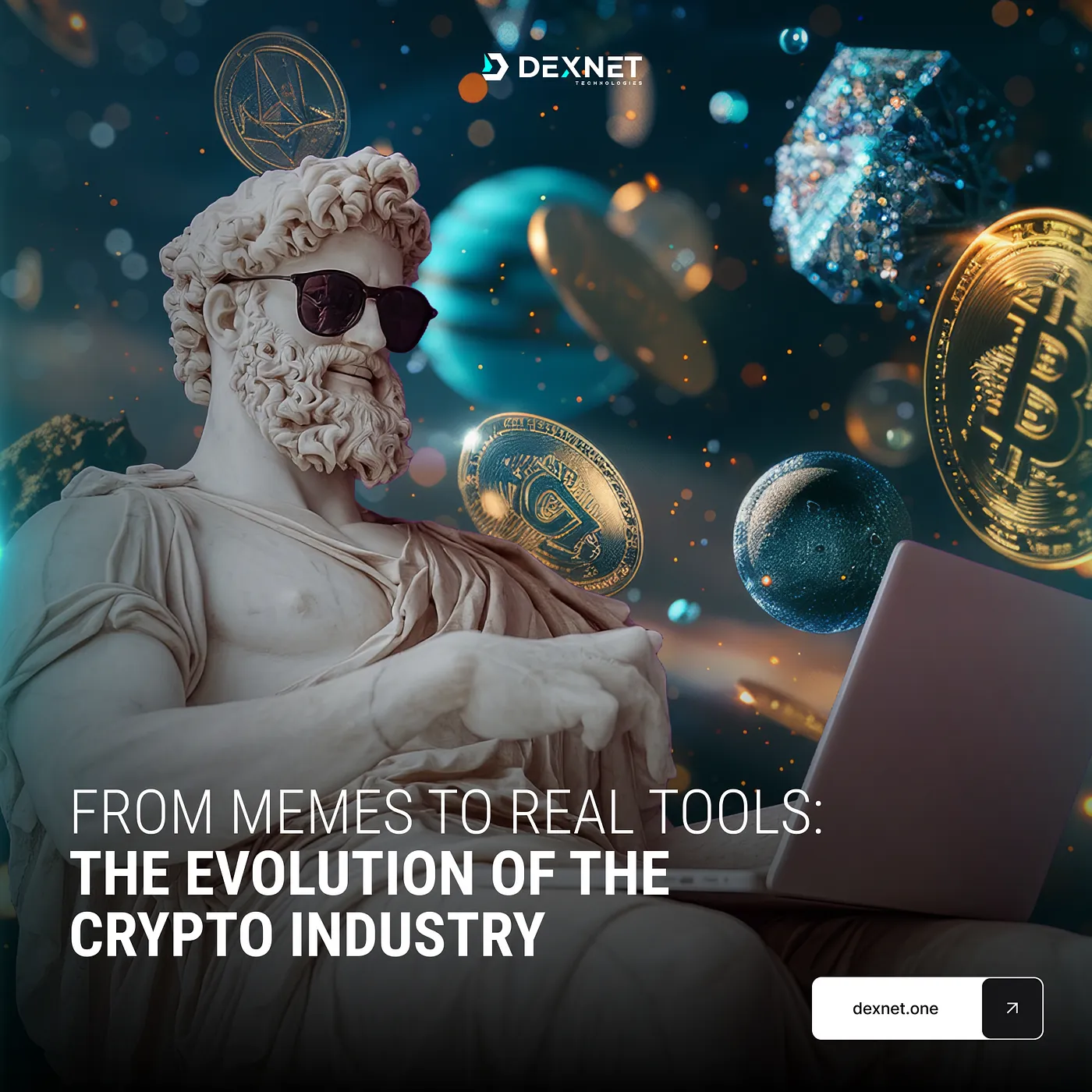From memes to real tools: the evolution of the crypto industry
 Dexnet
Dexnet
Not long ago, cryptocurrencies were seen as a hype-driven fad for enthusiasts. Remember Dogecoin — the joke coin featuring the smiling Shiba Inu from internet memes? Today, it’s backed by Elon Musk and ranks among the top 10 cryptocurrencies by market capitalization. Meme coins, once created as parodies, are now finding their way into investment portfolios. Think of TrumpCoin, launched by Donald Trump’s supporters, or Melania Trump’s Solana NFTs, which made headlines during election season. But where is the line between internet jokes and serious financial tools? How did the crypto industry transform from an online curiosity into a multibillion-dollar market?
The birth of an industry: from chaos to structure
When Bitcoin emerged in 2009, it was considered an experiment. Who could have predicted that 16 years later, its market cap would surpass $1 trillion? Yet, the road to recognition was rocky — volatility, hacker attacks and regulatory scrutiny challenged the industry at every turn. Despite this, the market persisted and matured.
Some projects did start as jokes, but crypto has long outgrown its early days as mere entertainment. DeFi, NFTs, tokenized assets and crypto banking all prove that the industry is here to stay.
Are memes driving innovation?
Are meme coins useless? Not necessarily. Dogecoin and Shiba Inu gained popularity thanks to strong communities and backing from high-profile figures. They played a key role in introducing millions to crypto and blockchain technology. Even politically themed meme coins spark discussions and drive engagement. And if a new viral token emerges tomorrow, will it be just another joke — or the foundation of the next major financial tool?
Blockchain beyond crypto
Blockchain is no longer just about cryptocurrencies. It’s now being used across various industries:
Logistics: supply chain transparency and counterfeit protection (IBM, VeChain).
Healthcare: secure patient data storage without risk of leaks.
Gaming: digital ownership and in-game economies (Axie Infinity, The Sandbox).
Data Storage: decentralized cloud solutions without single points of failure (DexCloud, Filecoin).
DexNet is building an ecosystem that offers decentralized alternatives to centralized services. It empowers users with full control over their digital assets:
DexSafe — a fully decentralized crypto wallet where only the owner controls the keys.
DexPoint — a service that lets users monetize their device’s idle resources, making decentralization accessible to everyone.
DexMobile — decentralized mobile connectivity through eSIM technology, eliminating the need for traditional carriers.
Blockchain is no longer just a niche tech — it’s reshaping the way we handle data, finance and digital infrastructure. Projects like DexNet are making this decentralized future a reality.
What’s next?
The future of crypto is unpredictable, but several key trends are emerging: mass adoption of stablecoins, the rise of crypto banking, tokenized assets, decentralized apps and GameFi platforms.
So what are we witnessing? From memes to serious financial tools, from jokes to global solutions — crypto continues to break stereotypes and push boundaries. And with projects like DexNet leading the way in decentralized services, the future is already here. The only question is: are you ready for it?
Subscribe to my newsletter
Read articles from Dexnet directly inside your inbox. Subscribe to the newsletter, and don't miss out.
Written by
